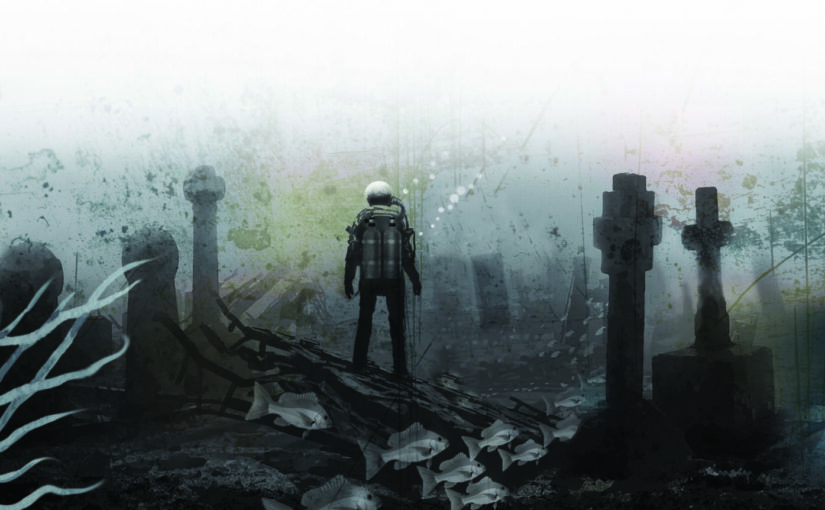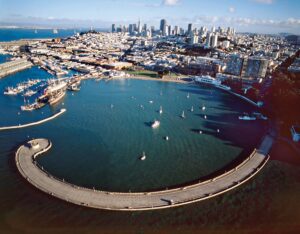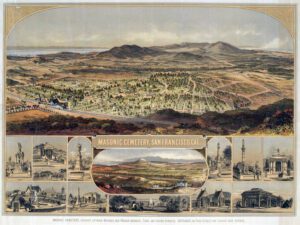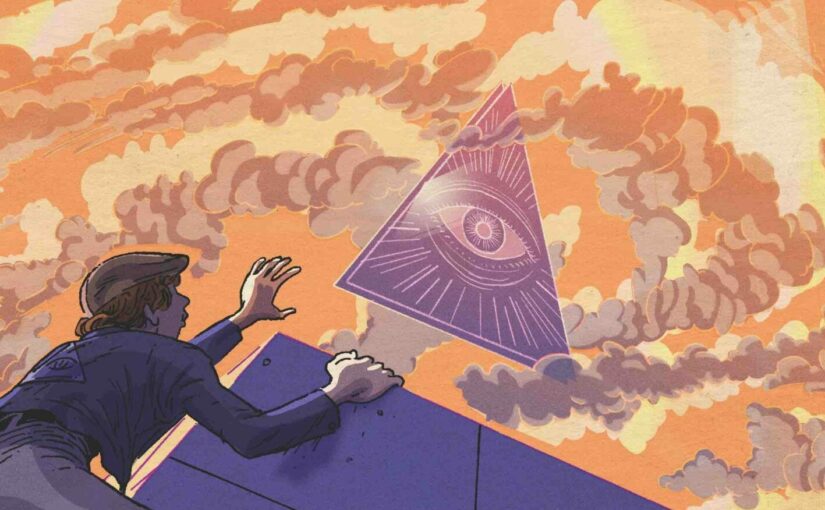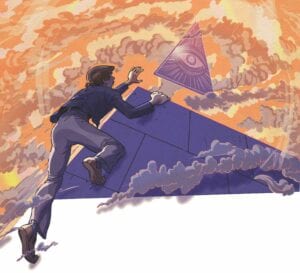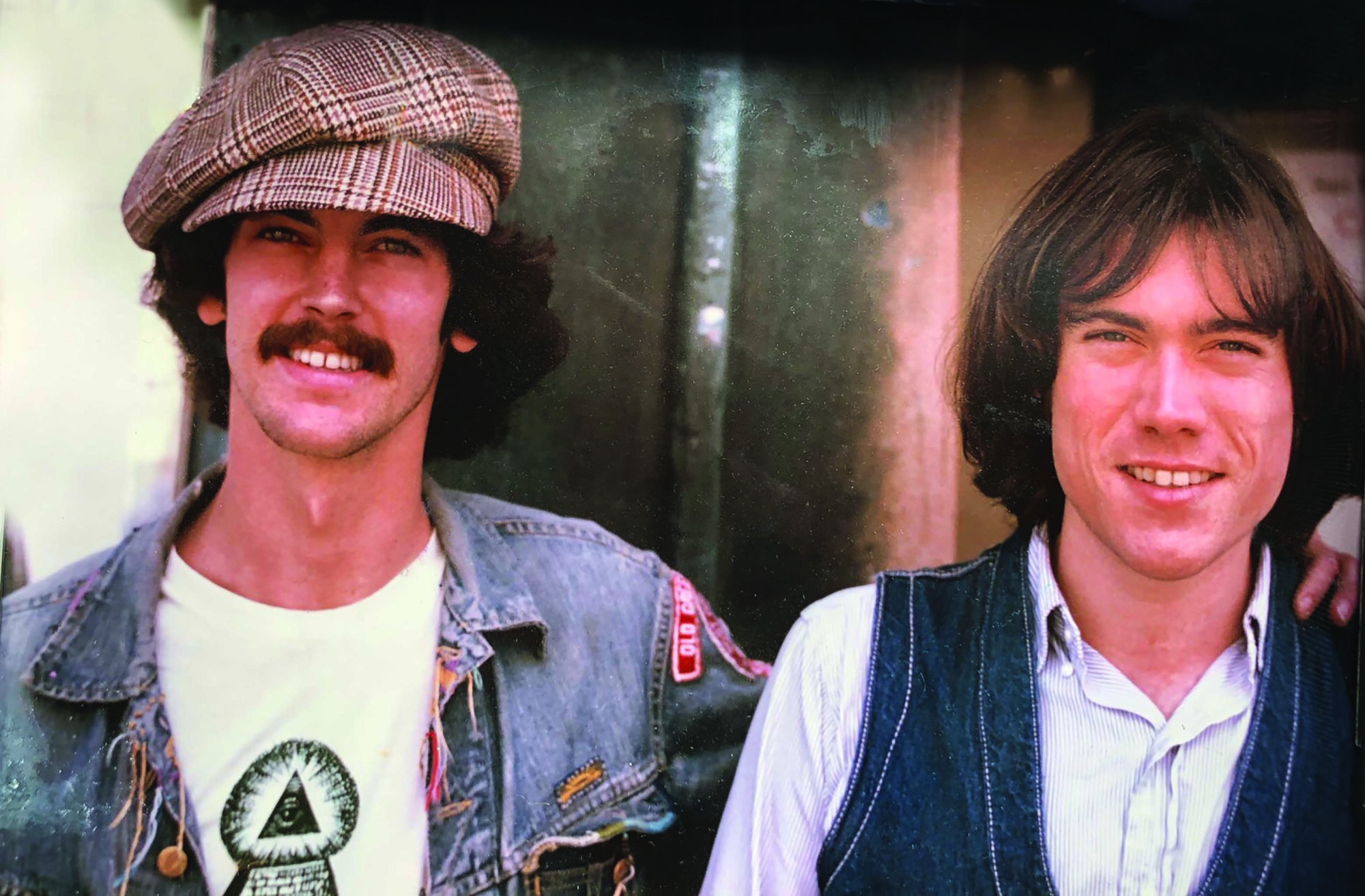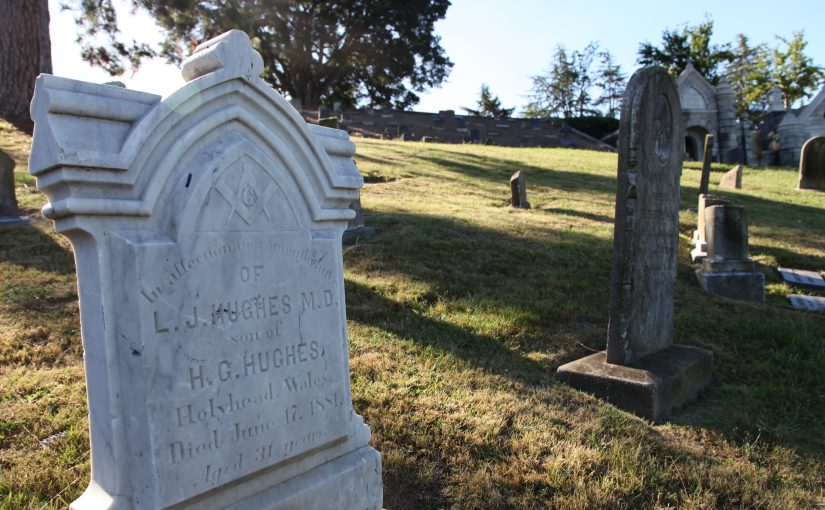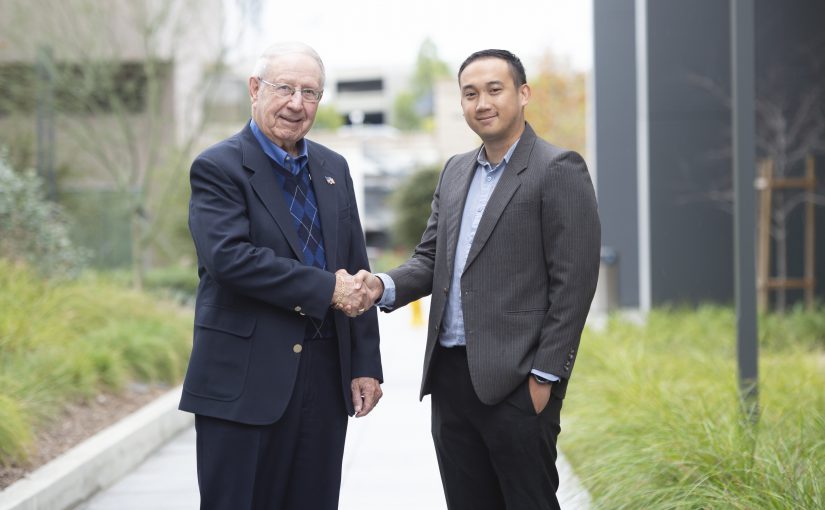Learn more about Freemasonry at: freemason.org/freemasonry-symbols
An introduction to the symbols, signs, and emblems of Masons and Masonic lodges.
Maybe you’ve heard rumors about the “Freemason pyramid” on the dollar bill, seen the square and compass logo on buildings around town, or wondered about the meaning of emblems like the Masonic trowel. What’s the history behind Masonic symbols, and how do they factor into what happens in a lodge?
Why Does Masonry Use Symbols?
From soaring architecture to dime-sized lapel pins, symbols adorn every part of the Masonic experience. Why? Symbols allow people to communicate quickly, and to transcend language barriers. When you see a green light or a circle with a line through it, you know what it means. Likewise, Masons use metaphors from geometry and the architecture of stonemasonry to inform their continuing pursuit of knowledge, ethics, and leadership skills.
From the Square and Compass to the Letter G: The Meaning of Masonic Emblems
When speculative Masonry began in the 17th century, it adopted the stonemason’s tools as symbols to illustrate life lessons. Freemasonry’s symbols today remain remarkably true to the first stonemasons’ working tools.
Here are some of the best-known Masonic symbols:
- Apron: Known as the “unique badge of a Mason,” the apron is the most recognizable item of a Mason’s attire. Masons wear aprons while at lodge, and at certain public events. The tradition dates back to the fraternity’s operative days, when stonemasons wore protective work aprons.
- Square and Compass: The Masonic square and compass is probably the most common symbol in Masonry, used to represent Freemasons and Masonic lodges around the world. Ancient stonemasons used the tools to create 90-degree angles and test the accuracy of their stones. In “speculative” Masonry, the square is an emblem of morality. The compass represents the relationship between the individual and society.
- The Letter G: The letter G is often seen in the center of the square and compass symbol. It stands for geometry, the basis for stonemasonry—and, symbolically, for modern Freemasonry.
- Plumb and Level: In stonemasonry, the plumb and level ensure surfaces are vertically and horizontally flush. For today’s Freemasons, the plumb is a symbol of justice, rectitude, and the importance of living in an upright manner, while the level is a reminder that all men are equal. You may have heard the phrase, “To meet on the level and part on the square.” That’s where it comes from!
- Trowel: One of a stonemason’s most important working tools is the trowel, used to spread mortar that binds stones together. In Freemasonry, the trowel is used to spread the “cement” of brotherly love to unite a sacred band or society of friends.
- Rough and Perfect Ashlars: The ashlars are two stone cubes placed near the master’s platform in the lodge; one is rough-edged, delivered straight from the quarry; the other is smooth and ready for building. The rough ashlar represents man in his crude form, while the perfect ashlar represents the man, who, through the teachings of Masonry, has become more polished. We never become a perfect ashlar, but we work toward it.
- Columns: Every Masonic lodge has representations of two pillars, replicas of the two columns that flanked the entrance to King Solomon’s temple. The pillars are said to represent strength and establishment.
- Winding Staircase: The winding staircase is another symbol inspired by King Solomon’s temple, referring to the steps leading from the entryway to the middle chamber of the temple. It’s an allegory for a member’s progress from Entered Apprentice to Fellow Craft.
- Other Masonic symbols include: The beehive, the acacia tree, the 47th Problem of Euclid, the Ark of the Covenant, the anchor, cable tow, sheaf of corn, gavel, and blazing star. Here’s a resource explaining some less-well-known Freemasonry symbols.
What’s the “Freemason Pyramid?”
Hollywood blockbusters like National Treasure and bestsellers like Dan Brown’s The Da Vinci Code and The Lost Symbol have done much to sensationalize Freemasonry’s symbols. A lot of the time, they contain more fiction than fact.
Take, for example, the image of the eye and the pyramid on the dollar bill. The pyramid does not appear in regular Masonic ritual or symbolism. The all-seeing eye, sometimes called the eye of providence, is used by Masons to represent the omniscient eye of God. But in the 18th century, when the U.S. was designing its Great Seal, the symbol was common among non-Masonic groups, too.
So what should we make of the rumors that Masons designed the dollar bill, or that the Great Seal of the United States is a Masonic emblem? They’re false, and false. According to Masonic historian S. Brent Morris, the only known Mason on the design committee was Benjamin Franklin, and his ideas didn’t make it into the final design. Artist Pierre Du Simitiere, a non-Mason, contributed the design for the eye. Another non-Mason, Francis Hopkinson, contributed the pyramid.
Further Reading
Check out California Freemason Magazine’s special issue devoted to The Lost Symbol.
- Art of Masonic Education
- Emblems of Innocence and Honor: The Masonic Apron
- Secrets Of The Cloth
- The Companies We Keep
- For Masonic Artifact Collectors, They’re Another Man’s Treasure
- Symbols of Femininity
- Worthy of Being Worn
- A Masonic Whodunnit
- Pyramid Scheme
- The Etsy Crew
- For Freemasons, Death Is Not the End
- Intelligent Design
- The Marks of Mankind
- Henry Wilson Coil Library and Museum of Freemasonry
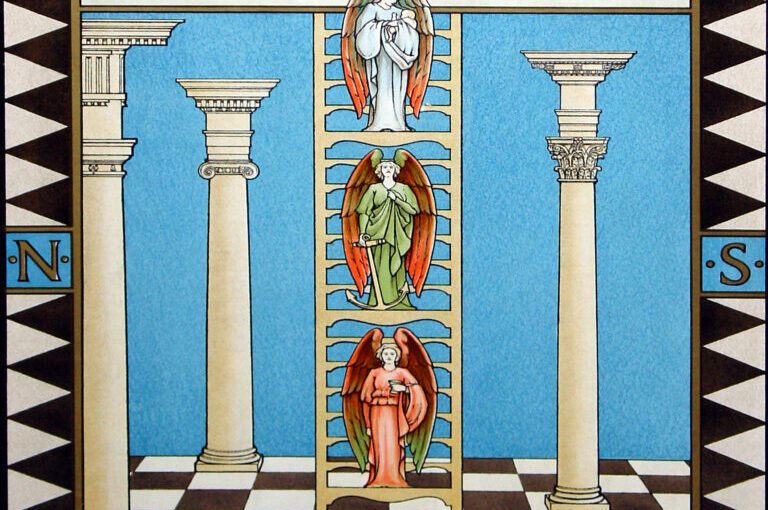
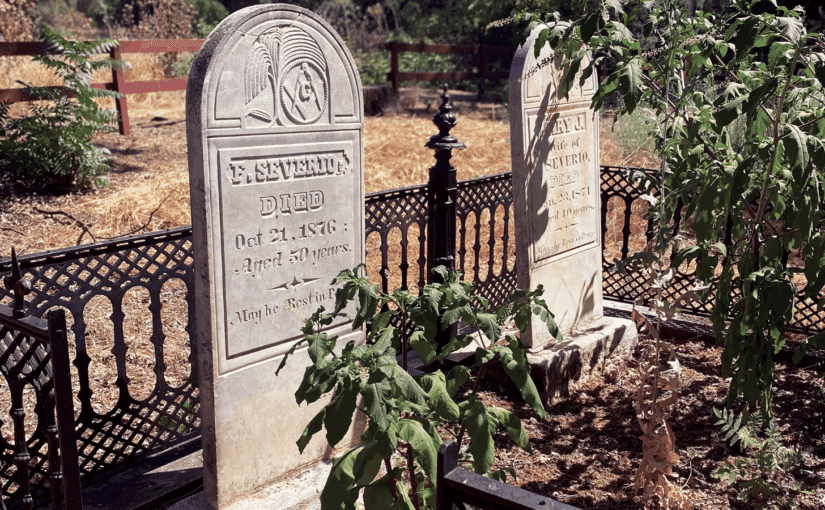
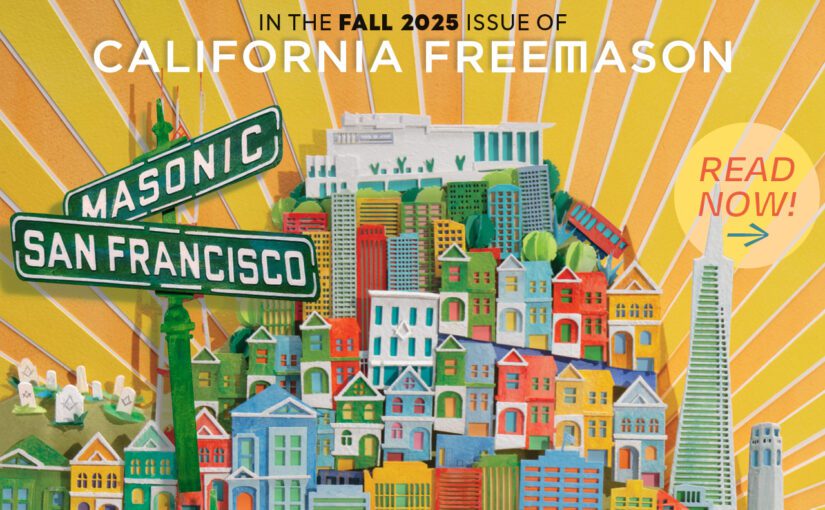
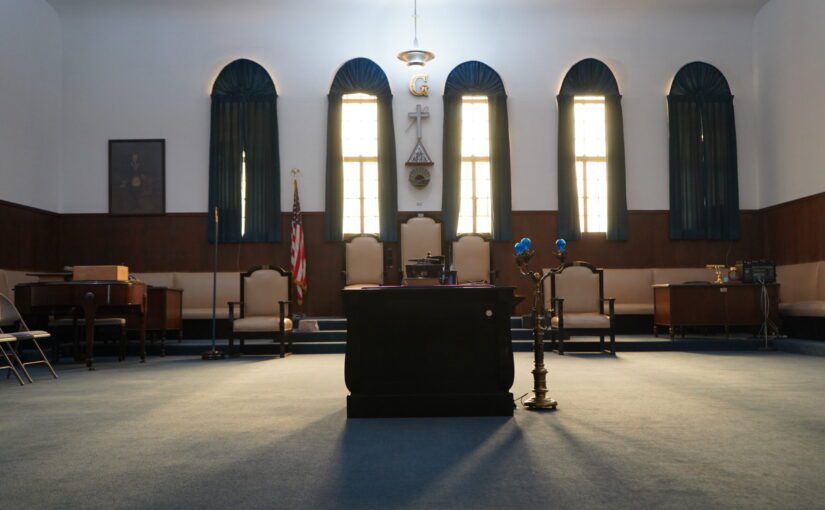
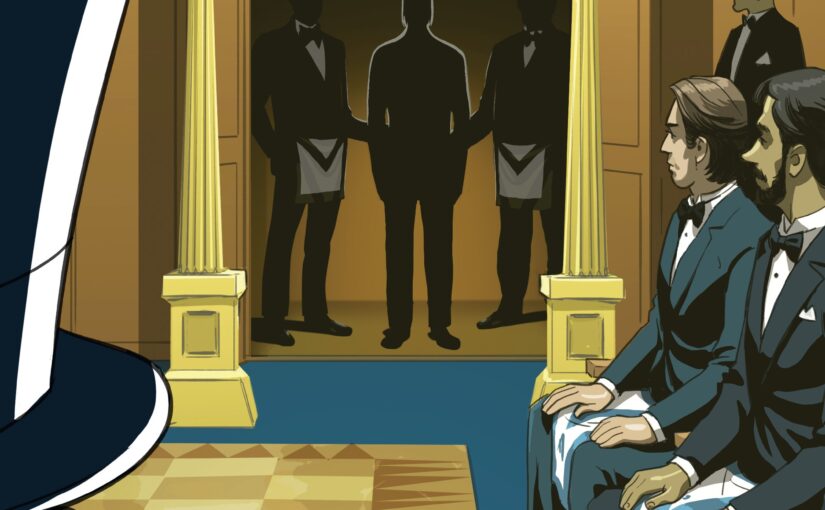
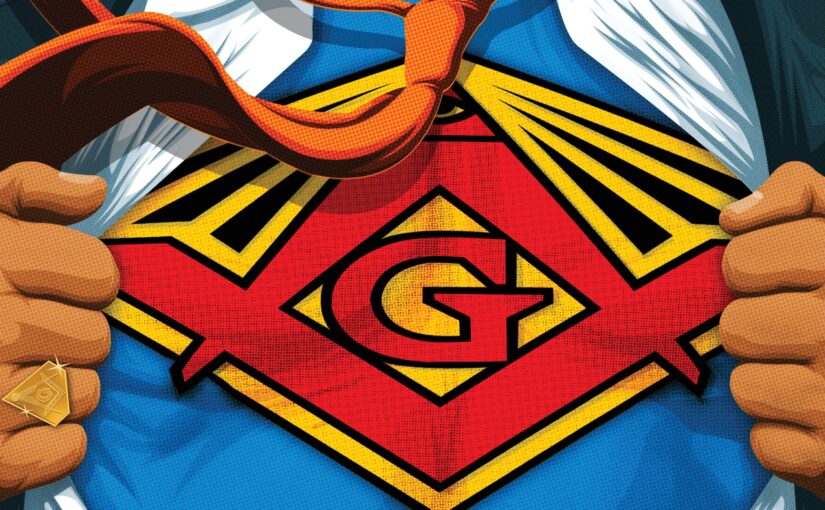
 The simple answer is that the best part of this job is the people I’ve been blessed to meet on this journey. No matter where I go, I’m always impressed by the commitment of California Masons to one another, to their communities, and to our craft. I get to see brotherly love, relief, and truth put into practice in a million different ways—some big and dramatic, some small and close to home. But in every case, I know when I come to a Masonic lodge, I’m going to meet brothers who are taking the values and teachings of Freemasonry and putting them into action.
The simple answer is that the best part of this job is the people I’ve been blessed to meet on this journey. No matter where I go, I’m always impressed by the commitment of California Masons to one another, to their communities, and to our craft. I get to see brotherly love, relief, and truth put into practice in a million different ways—some big and dramatic, some small and close to home. But in every case, I know when I come to a Masonic lodge, I’m going to meet brothers who are taking the values and teachings of Freemasonry and putting them into action.
